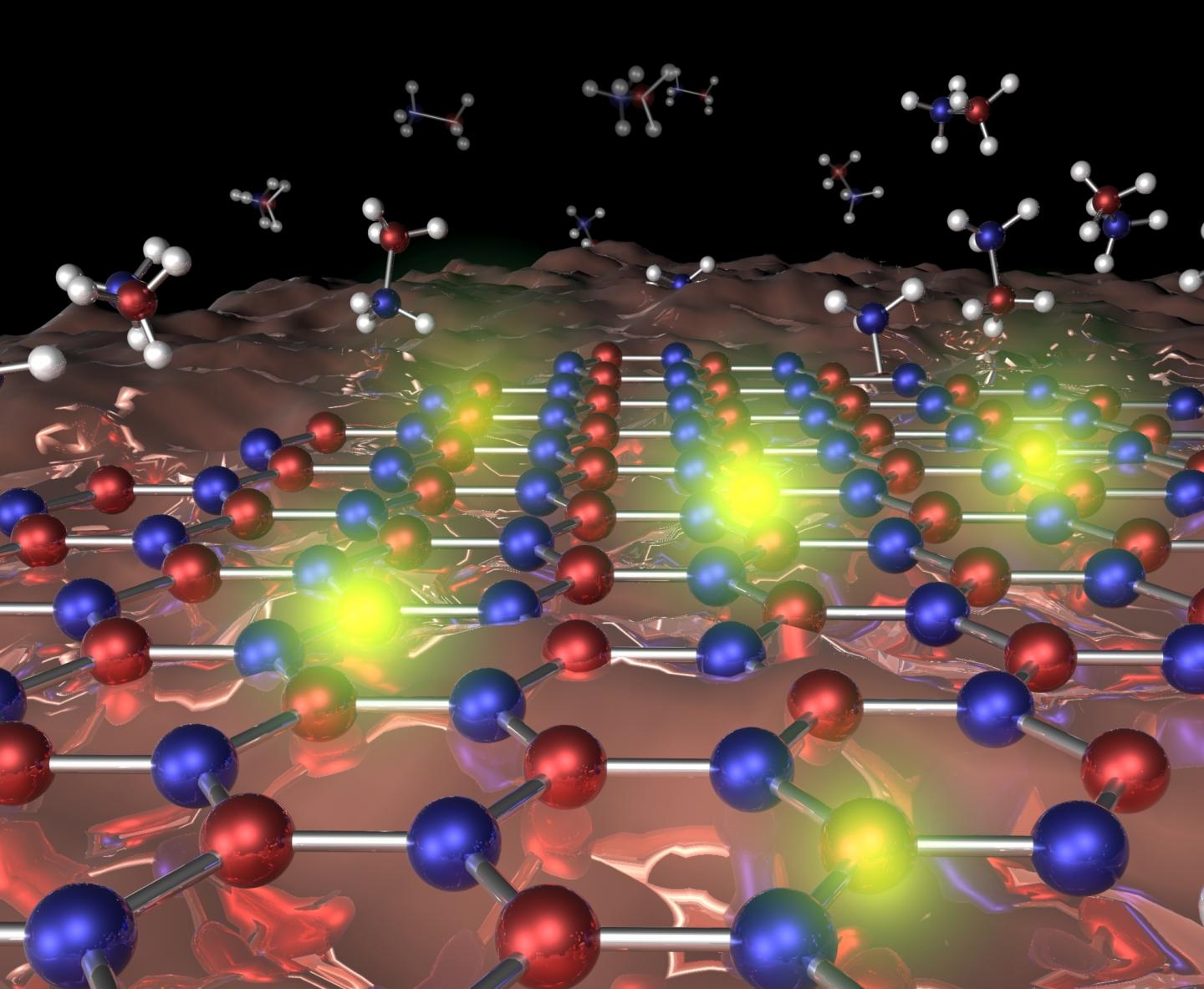Study helps unlock chemical structure in defects that emit single photons

Credit: Trong Toan Tran
Systems which can emit a stream of single photons, referred to as quantum light sources, are critical hardware components for emerging technologies such as quantum computing, the quantum internet, and quantum communications.
In many cases the ability to generate quantum light on-demand requires the manipulation and control of single atoms or molecules, pushing the limit of modern fabrication techniques, and making the development of these systems a cross-disciplinary challenge.
In new research, published in Nature Materials, an international multidisciplinary collaboration led by the University of Technology Sydney (UTS), has uncovered the chemical structure behind defects in white graphene (hexagonal boron nitride, hBN), a two dimensional nanomaterial that shows great promise as a platform for generating quantum light.
The defects, or crystal imperfections, can act as single photon sources and an understanding of their chemical structure is critical to being able to fabricate them in a controlled way.
“hBN single photon emitters display outstanding optical properties, among the best from any solid state material system, however, to make practical use of them we need to understand the nature of the defect and we have finally started to unravel this riddle,” says UTS PhD candidate Noah Mendelson and first author of the study.
“Unfortunately, we cannot simply combine powerful techniques to visualize single atoms directly with quantum optics measurements, so obtaining this structural information is very challenging. Instead we attacked this problem from a different angle, by controlling the incorporation of dopants, like carbon, into hBN during growth and then directly comparing the optical properties for each, ” he said.
To realise this comprehensive study, the team, led by Professor Igor Aharonovich, chief investigator of the UTS node of the ARC Centre of Excellence for Transformative Meta-Optical Materials (TMOS), turned to collaborators in Australia and around the world to provide the array of samples needed.
The researchers were able to observe, for the first time, a direct link between carbon incorporation into the hBN lattice and quantum emission.
“Determining the structure of material defects is an incredibly challenging problem and requires experts from many disciplines. This is not something we could have done within our group alone. Only by teaming up with collaborators from across the world whose expertise lies in different materials growth techniques could we study this issue comprehensively. Working together were we finally able to provide the clarity needed for the research community as a whole,” said Professor Aharonovich.
“It was particularly exciting as this study was enabled by the new collaborative efforts with collaborators Dipankar Chugh, Hark Hoe Tan and Chennupati Jagadish from the TMOS node at the Australian National University, ” he said.
The scientists also identified another intriguing feature in their study, that the defects carry spin, a fundamental quantum mechanical property, and a key element to encode and retrieve quantum information stored on single photons.
“Confirming these defects carry spin opens up exciting possibilities for future quantum sensing applications, specifically with atomically thin materials.” Professor Aharonovich said.
The work brings to the forefront a novel research field, 2D quantum spintronics, and lays the groundwork for further studies into quantum light emission from hBN. The authors anticipate their work will stimulate increased interest in the field and facilitate a range of follow up experiments such as the generation of entangled photon pairs from hBN, detailed studies of the spin properties of the system, and theoretical confirmation of the defect structure.
“This is just the beginning, and we anticipate our findings will accelerate the deployment of hBN quantum emitters for a range of emerging technologies,” concludes Mr. Mendelson.
###
Researchers from Shanghai University, University of Nottingham, University of Würzburg, University of California – Berkeley, and Trent University were also involved in the study
Media Contact
Marea Martlew
61-424-735-255
Original Source
http://10.
Related Journal Article
http://dx.





